Ben Winchester: Rewriting the Rural Narrative
I am a glass-full kind of guy, especially when it comes to what is happening across our rural communities. The dominant narrative of doom, gloom, demise, and death is based largely on stereotypes or trends that happened to our towns over a half century (or more) ago. That is, our kids keep leaving, hollowing out our undesirable towns and leaving only graying residents to fend for themselves in the middle of nowhere. Then one day, these towns will die, they say.
I believe our rural communities are better poised for the future than ever before. But rather than each community fending for themselves, we must better recognize the aspects of regional, rural living and the relationships between our places that are more important than ever. Economically, we don’t all work in town. In fact, just 51% of residents across Minnesota work in the same county as their home. Every day 6,920 people drive into McLeod County to work, while at the same time 9,527 drive out. Just 9,028 people (57%) both work and live in the county. These regional employment patterns are not unique – they are replicated across the country.
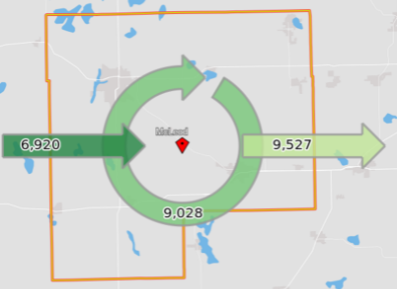
We may be led to believe social life is dying and people don’t want to be involved anymore, but this is not true. New groups are being created every year to provide civic or social structures – like taking disabled veterans fishing or protecting our lakes. Across McLeod County, there are 258 nonprofits in 2020, up from 211 in 2000. These nonprofits are sources of over $213 million in revenue, and hold over $410 million in assets. At the same time, like with jobs, people cross the county lines to participate. This has been one of the greater shifts in social life, from place-based groups to interest-based groups. These interest-based organizations can span multiple counties into regions – for example the West Central Minnesota Snowmobile Association. There are people involved from all over the region in this group.
The regionality of our lives is part and parcel of rural living. No town is a one-stop shop anymore. We live, work, shop and play in a fairly large region.
To emphasize this we conducted an exercise in February with participants in the McLeod for Tomorrow leadership program. This was a simplified version but we asked each participant to mark their home with a dot, then identify the boundaries around which they, in the past year, went to shop and eat out. The results depicted below are not the prettiest but are a powerful affirmation of the regional model. Notice how far out from the county people travel during the course of everyday life?
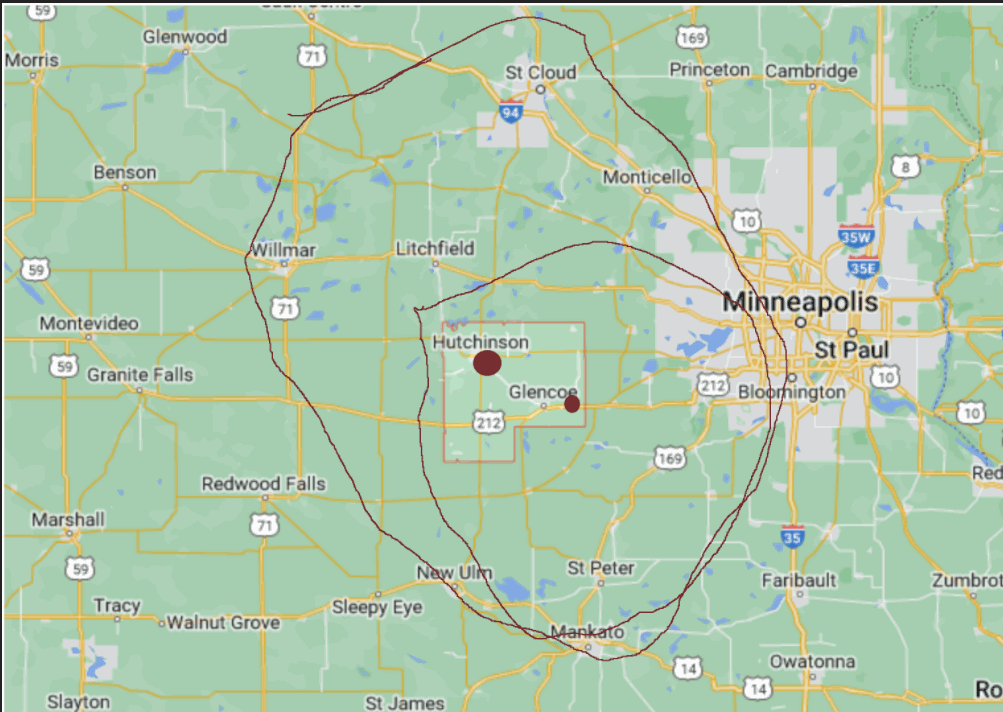
We can do many exercises like this to find out about all the cool things going on around us. We must move past the parochial model that “we must have it all” in our town. Again, the one-stop shop town is long gone. For example, say I am looking to moving to Genericville, and I run into the Mayor:
Me: I am looking at moving to Genericville!
Mayor: Super! You will love it here, we have a fine restaurant, a full k-12 school, and a great C-store/hair stylist/car sales.
Me: I am also looking at moving to Happyville down the road.
Mayor: Oh, there’s nothing going there, WE have it all!
What just happened there? If we can’t talk nicely about our neighbor down the road we really do live in the middle of nowhere. So I ask, Mayor, how do you truly market your town if you don’t know what’s going on around you?
What just happened there? If we can’t talk nicely about our neighbor down the road we really do live in the middle of nowhere. So I ask, Mayor, how do you truly market your town if you don’t know what’s going on around you?
This does present a challenge, however: How can we make local decisions while at the same time respecting the regional reality of our lives? Our county boundaries are not some form of natural population delineations; they were drawn during the time of horse and buggy. We must recognize that the region is the primary geography of interest and when we view our rural areas in this light, we are more diverse economically, socially, and demographically than ever before. In fact, we live in the MIDDLE OF EVERYWHERE.
To read more about rural trends please visit: The Brain Gain
Meg Reflections
Growing up in a small community, it becomes easy to adapt the negative narrative toward your rural town. “Middle of nowhere”, “this town has absolutely nothing”, “the town is dying” among other statements come out of the mouths of the people who supposedly care about and grew up in the area. It’s so common, we don’t question this mentality even a small bit.
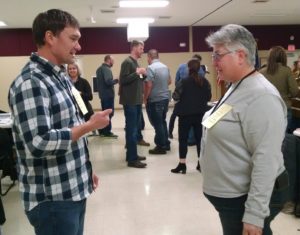 But pointing out the negativity of the narrative makes it obvious: what we say about our towns really does impact the opinions of others around us. How can creating a more positive opinion of what the rural narrative means change the way we look at where we live?
But pointing out the negativity of the narrative makes it obvious: what we say about our towns really does impact the opinions of others around us. How can creating a more positive opinion of what the rural narrative means change the way we look at where we live?
Never once has someone suggested maybe we shouldn’t talk about our town in a way that drags it down. That old news from forty years ago does not have to influence the future of the town. That change does not mean “death” to the community, just a different way.
Living in the middle of everywhere is a much more accurate portrayal of McLeod County. There are diverse jobs, community members, and opportunities. We aren’t dissipating. We certainly aren’t dying.
Living in the middle of everywhere is a much more accurate portrayal of McLeod County. There are diverse jobs, community members, and opportunities. We aren’t dissipating. We certainly aren’t dying.
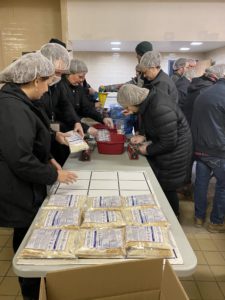
On the surface, if you look at Stewart or Brownton, you might see a town of a few hundred. A population sign that has remained largely unchanged over the past few decades. If you talk to local residents, you’ll hear about how Seneca wanted to come to Stewart but city council couldn’t agree on which side of the tracks the plant would go. This left Seneca no choice but to go to Glencoe. You’ll hear about how the towns couldn’t agree on what to do with the schools, so they shut it down completely, and how “that is what’s killing the towns.”
What you won’t see or hear is how the Brownton community sustains excellent softball opportunities on nice fields. Or how Stewart pulled together to create an annual tree lighting event for community members, all over a question on Facebook. You won’t hear about the community garden that Brownton has hopes of putting in for residents. You certainly won’t see the safe, close-knit, and caring community that showed up in numbers nearing 500 when the Stewart City maintenance man passed away unexpectedly.
We aren’t dying. Far from it, actually. We might not have a Walmart, a grocery store, or even a Dollar General in some cases. But community? That we have an abundance of.
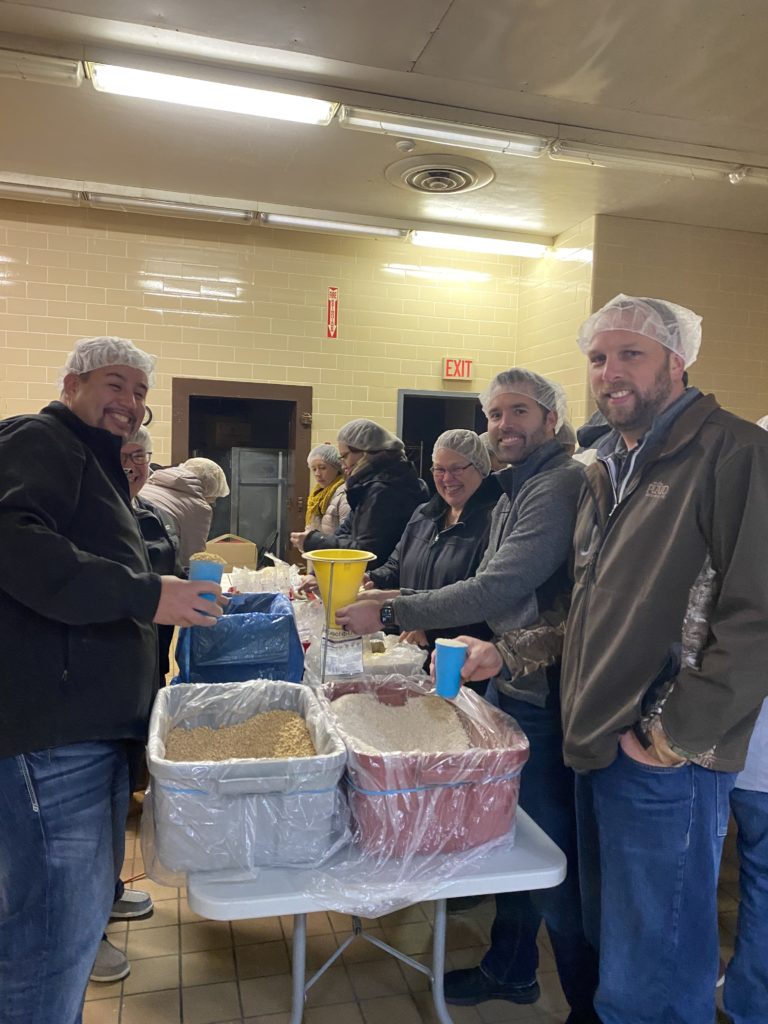
About MFT
McLeod For Tomorrow is a 501c3 organization that brings leadership education to the workers and community members of McLeod County. We have been in existence since 2007, training a cohort of 16-24 participants annually.
Our program structure includes leadership education taught with educators from the U of M extension. Followed by tours of businesses in the county, and key speakers from individuals who are involved in the community. Additional class components include networking and learning about the assets in each town in McLeod County. Finally, the cohort works together on a civic project to bring a tangible product forward that makes a difference to the community. McLeod For Tomorrow strives to be a partner within the community and influence others to be more involved in ways that align with their passions and strengths.
Rewriting the rural narrative is one of the important components to our mission to build leaders and connect communities. It encourages the cohort to look objectively into the opportunities, not just failures or what is missing for one town versus the other.
